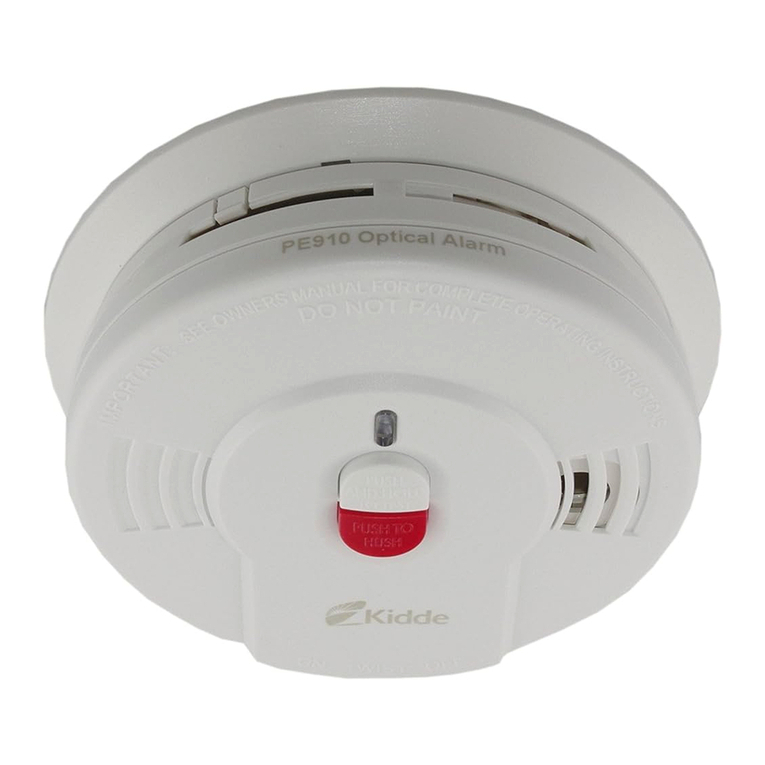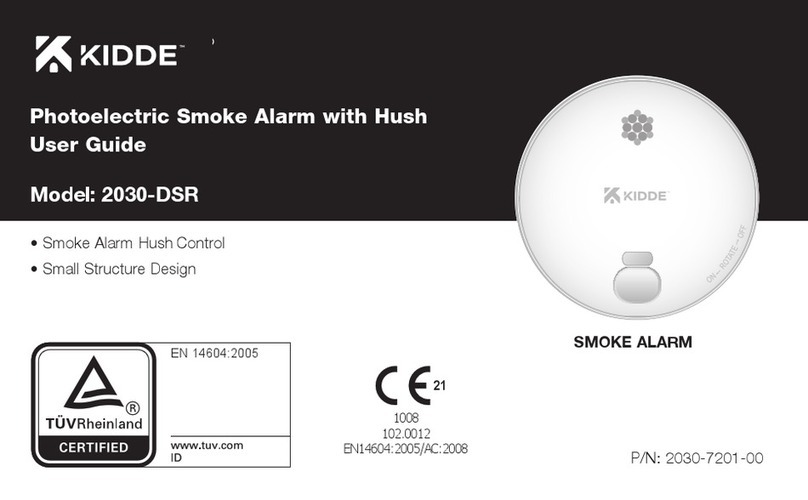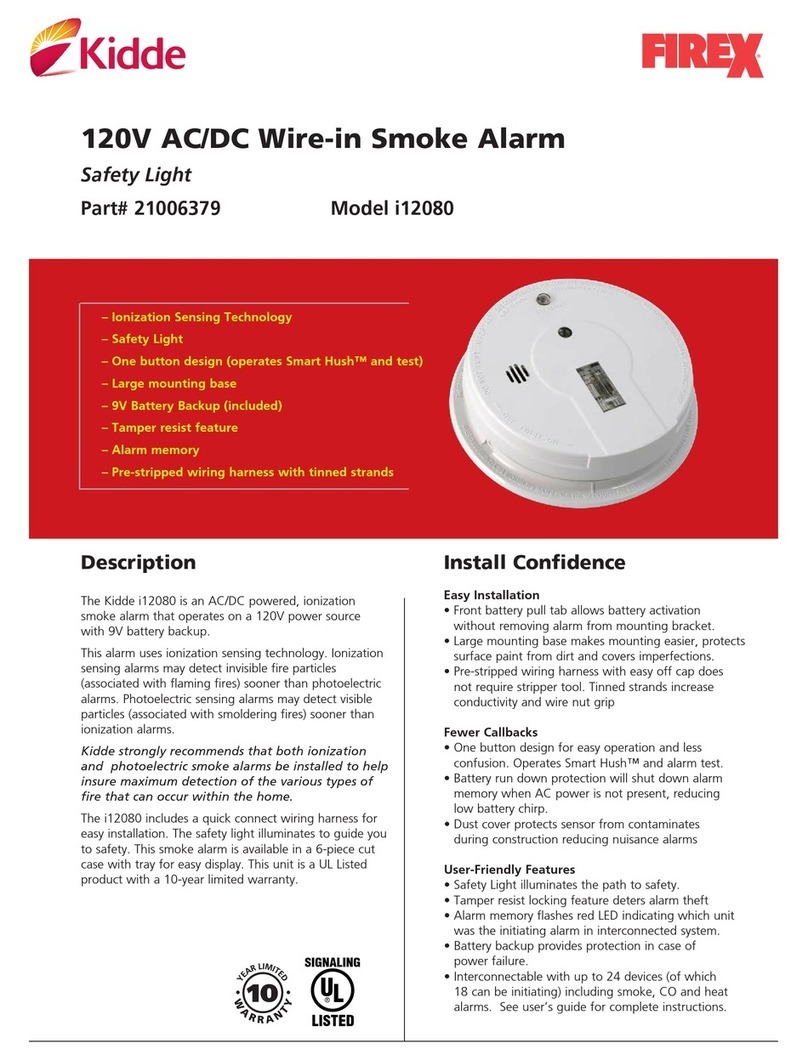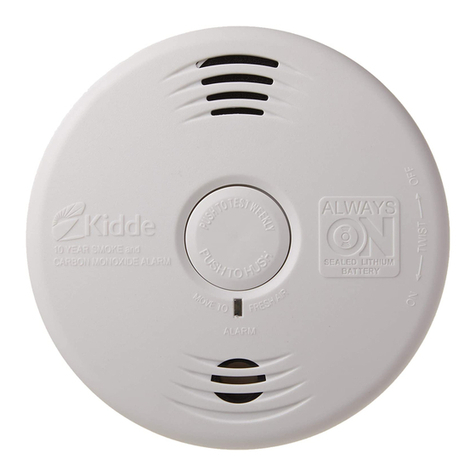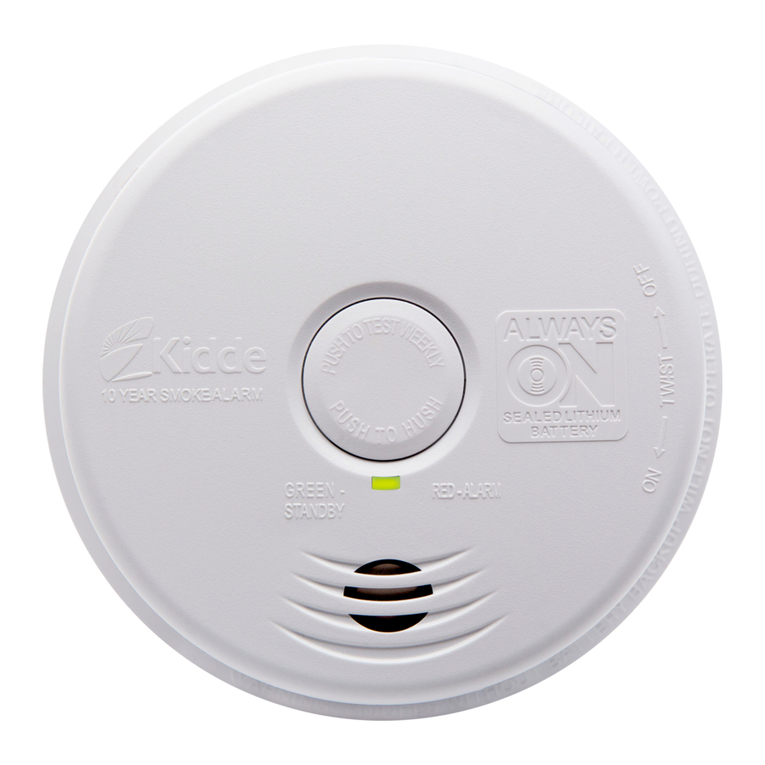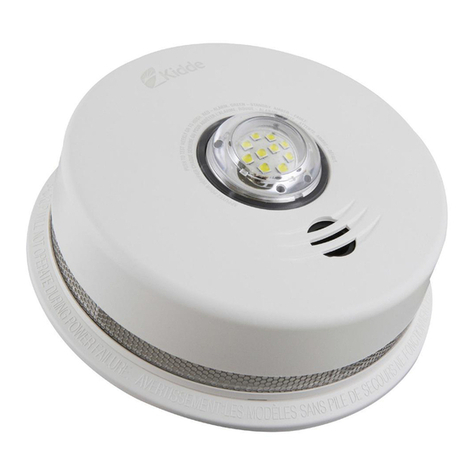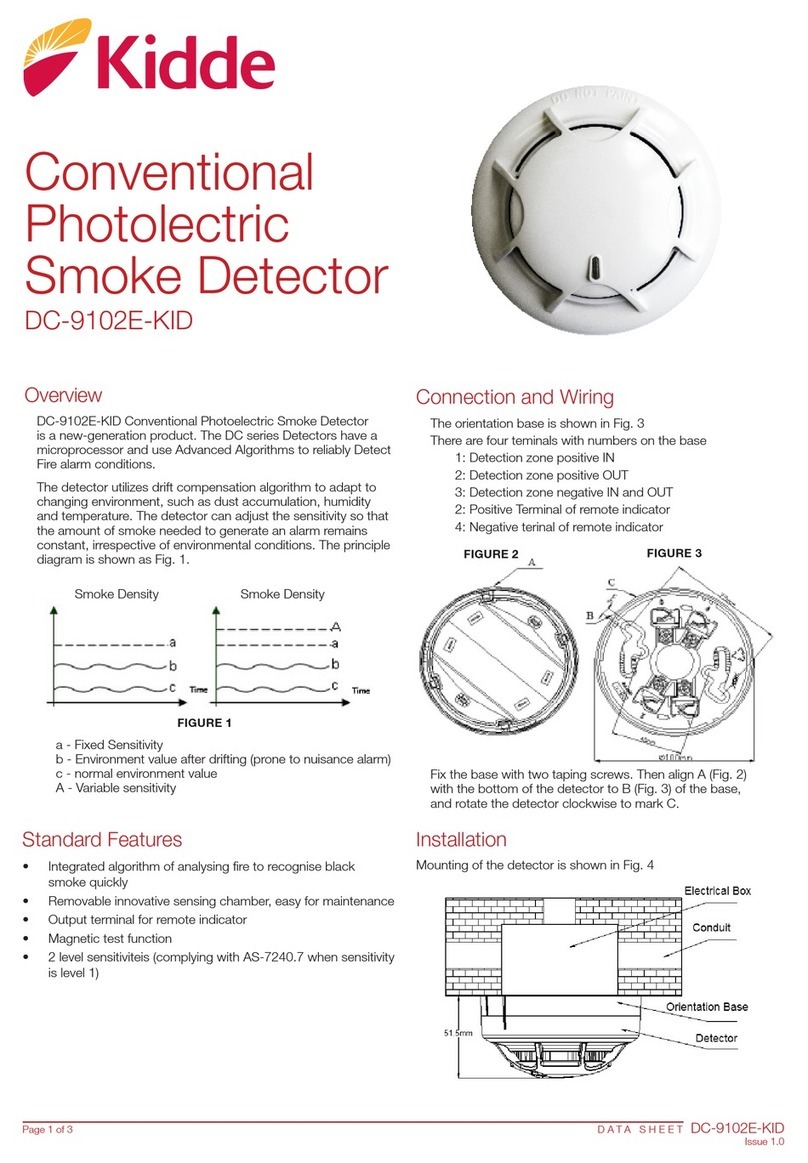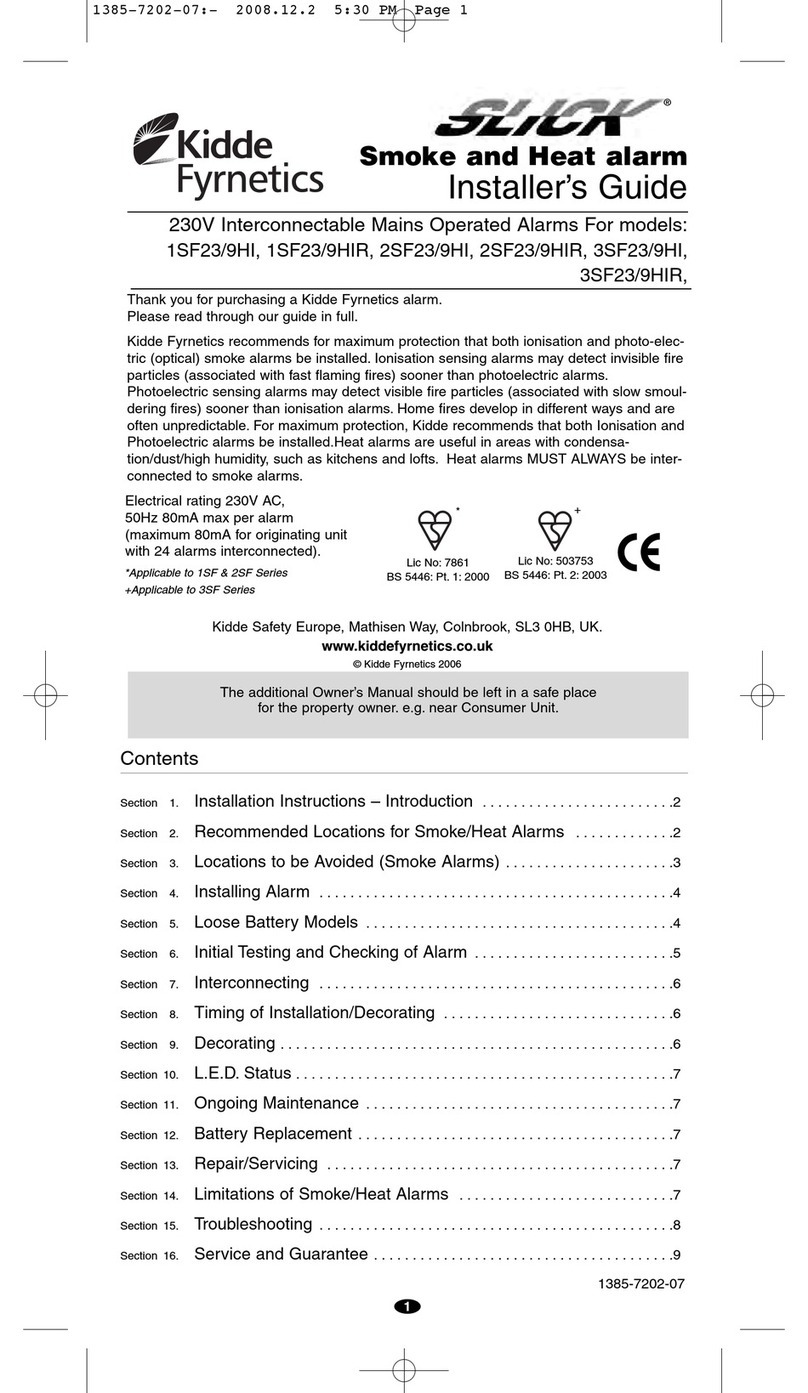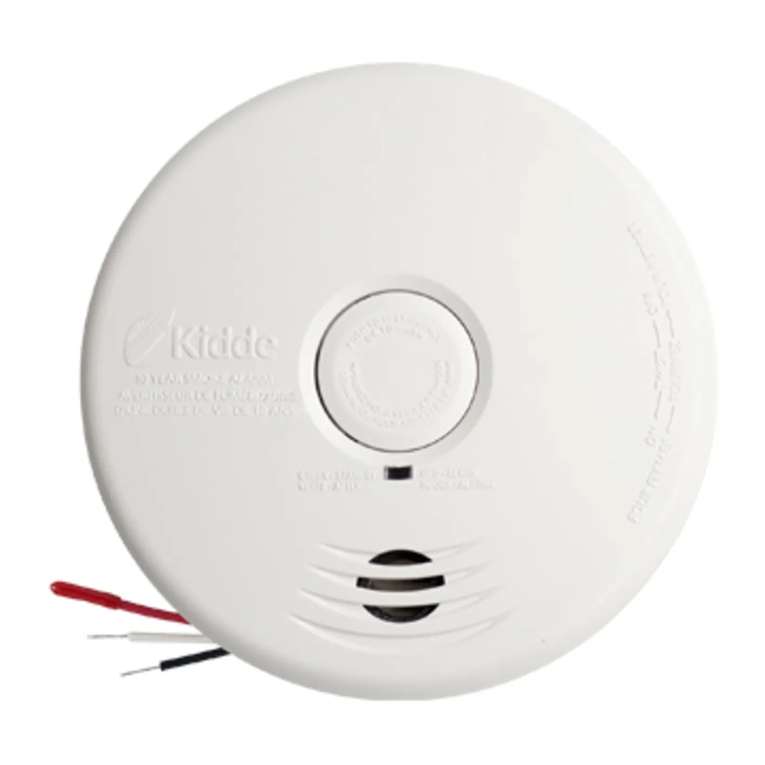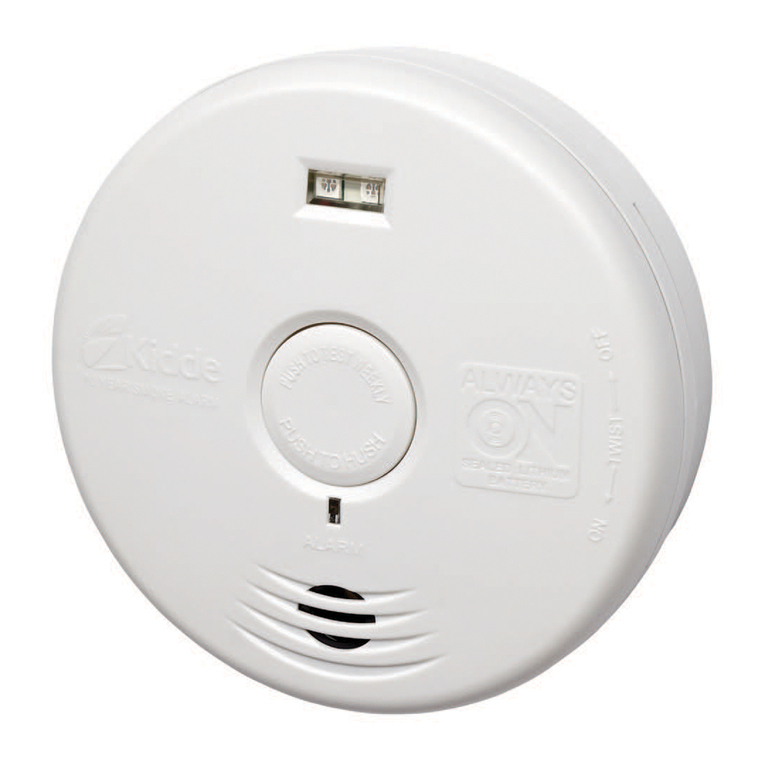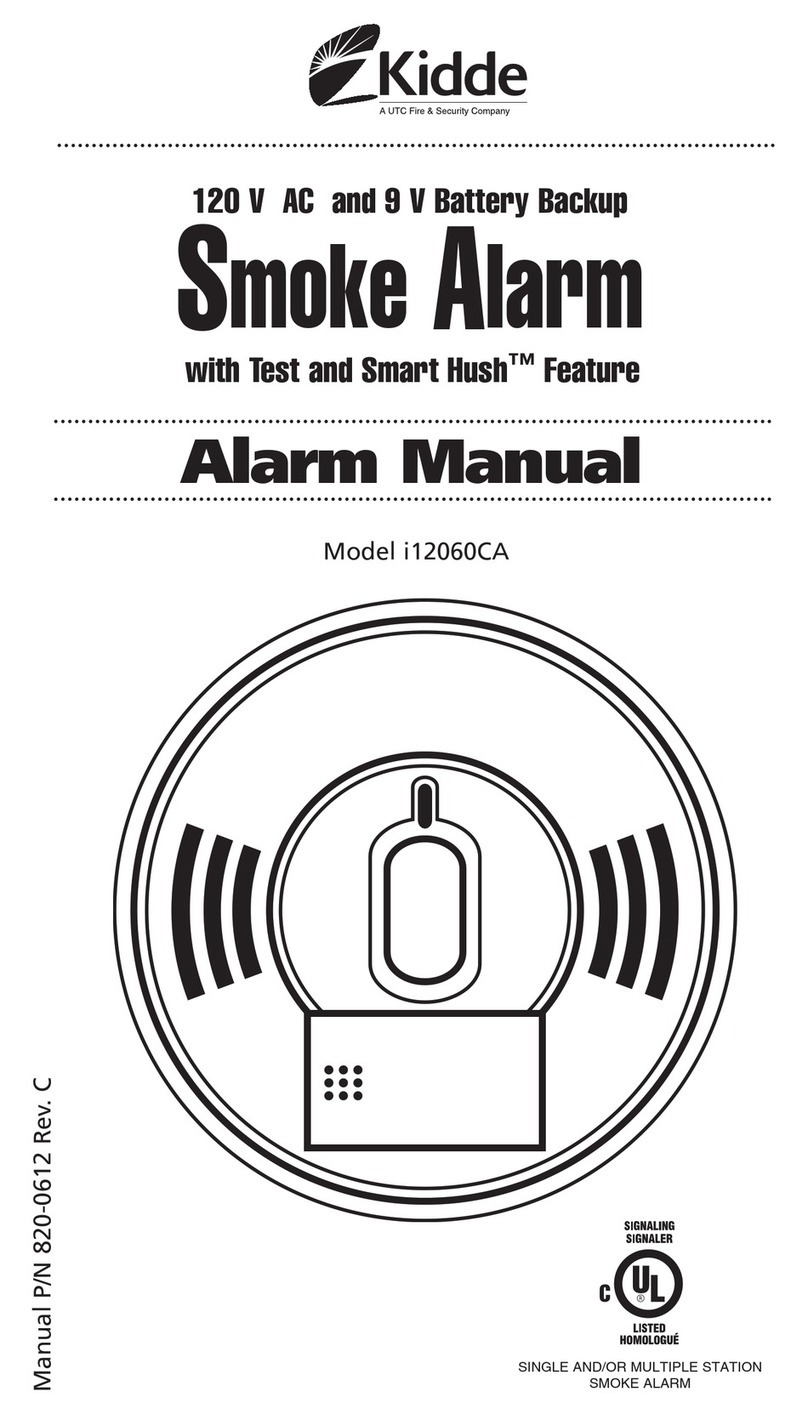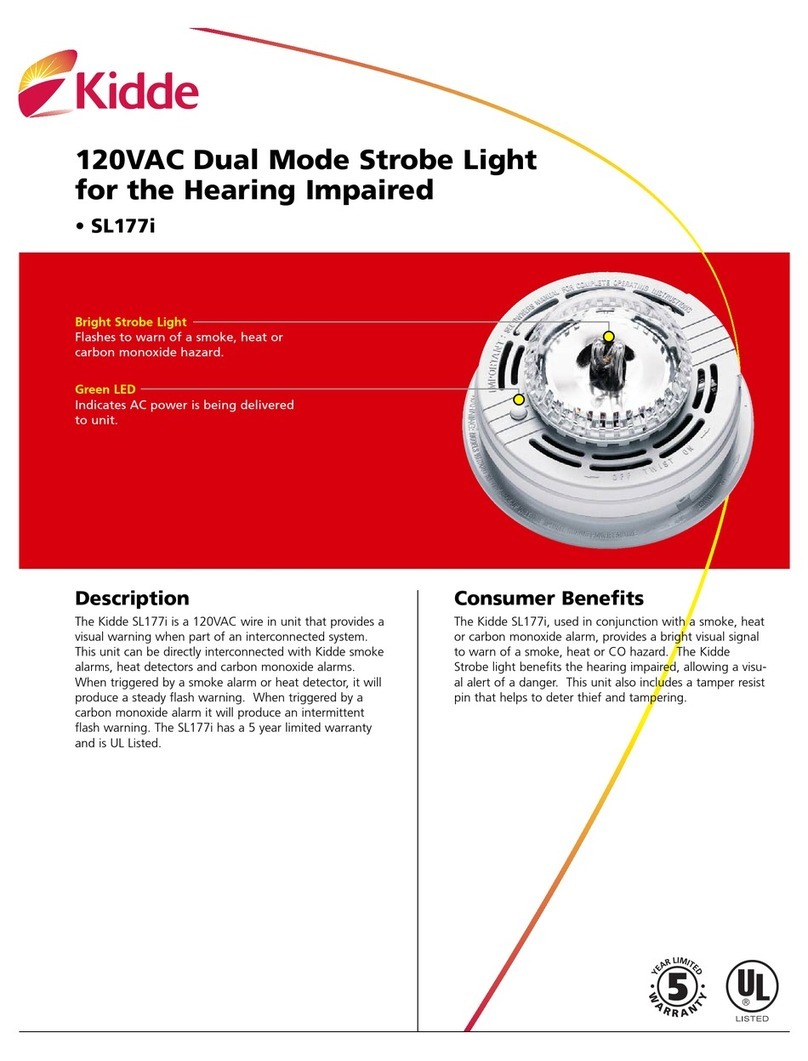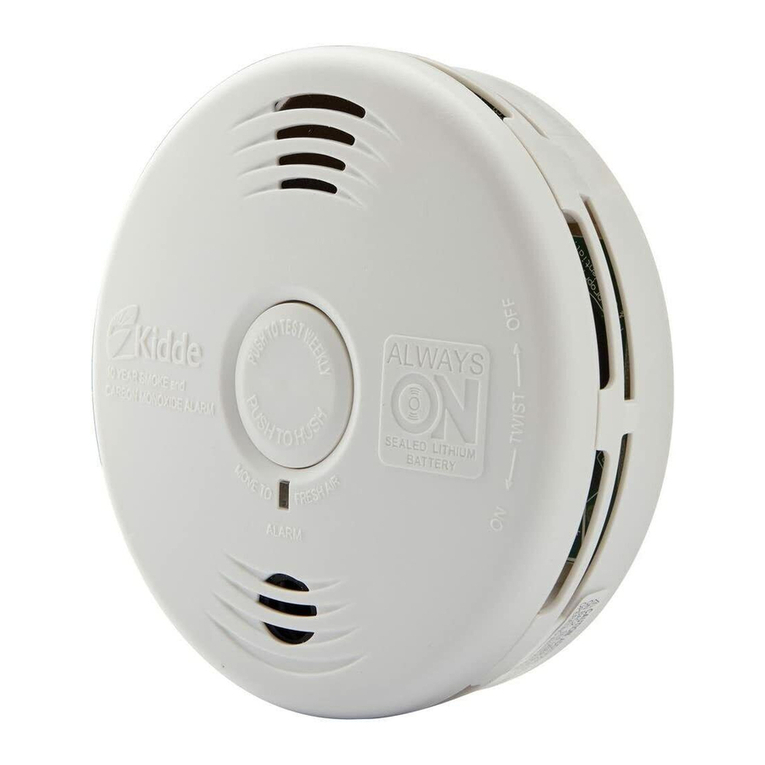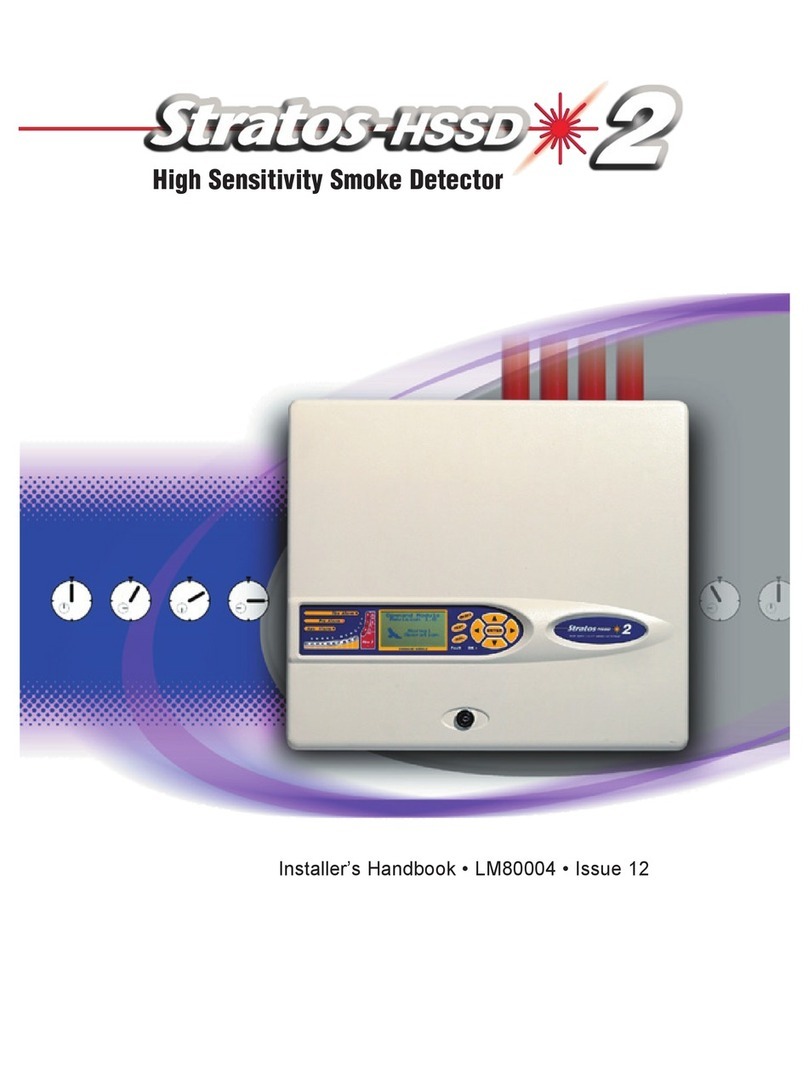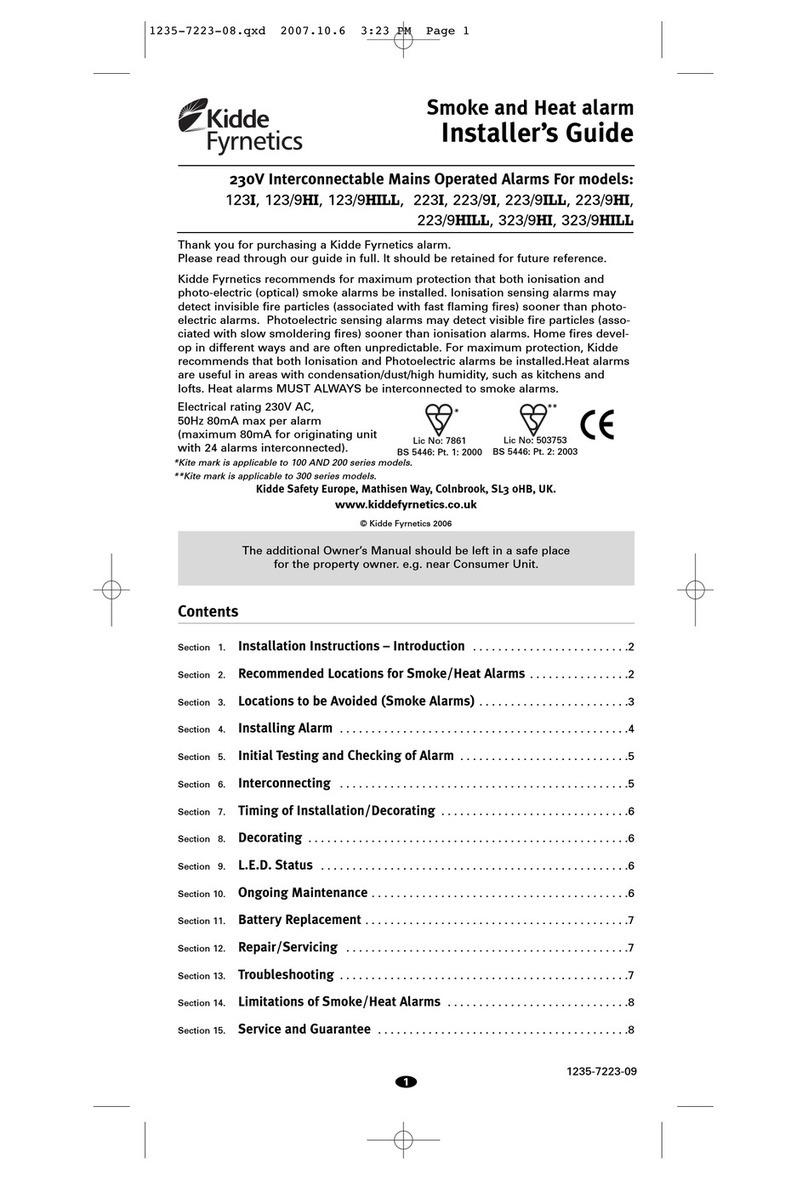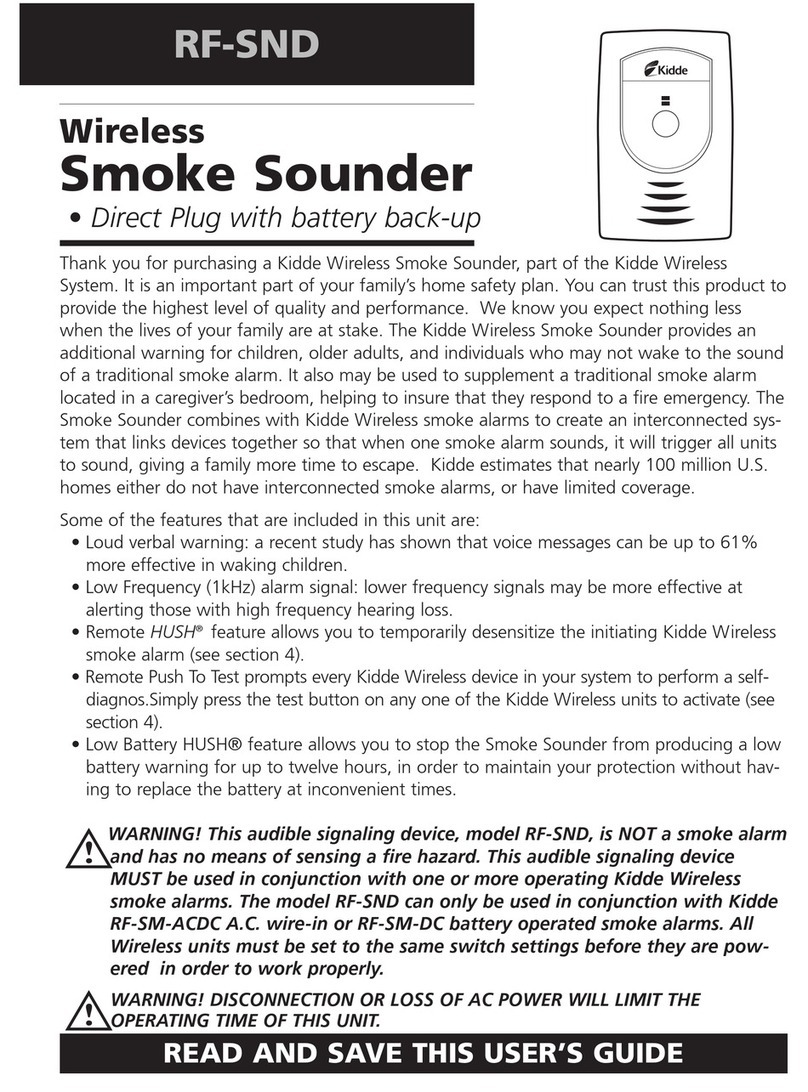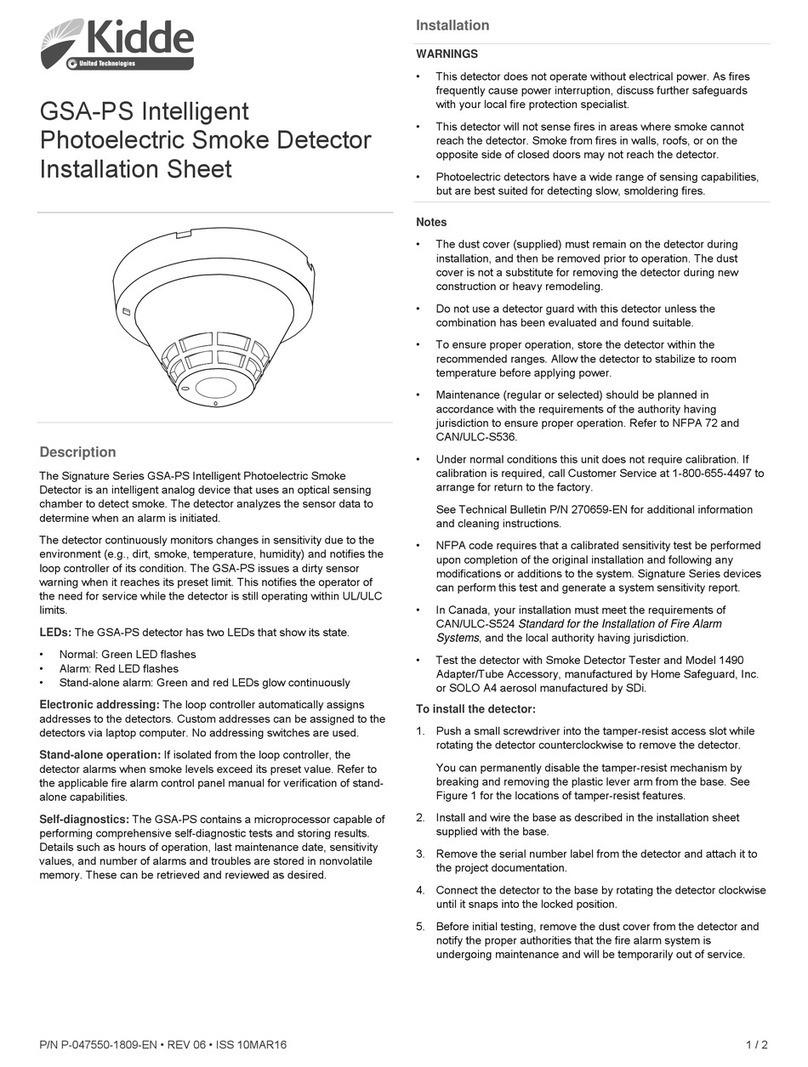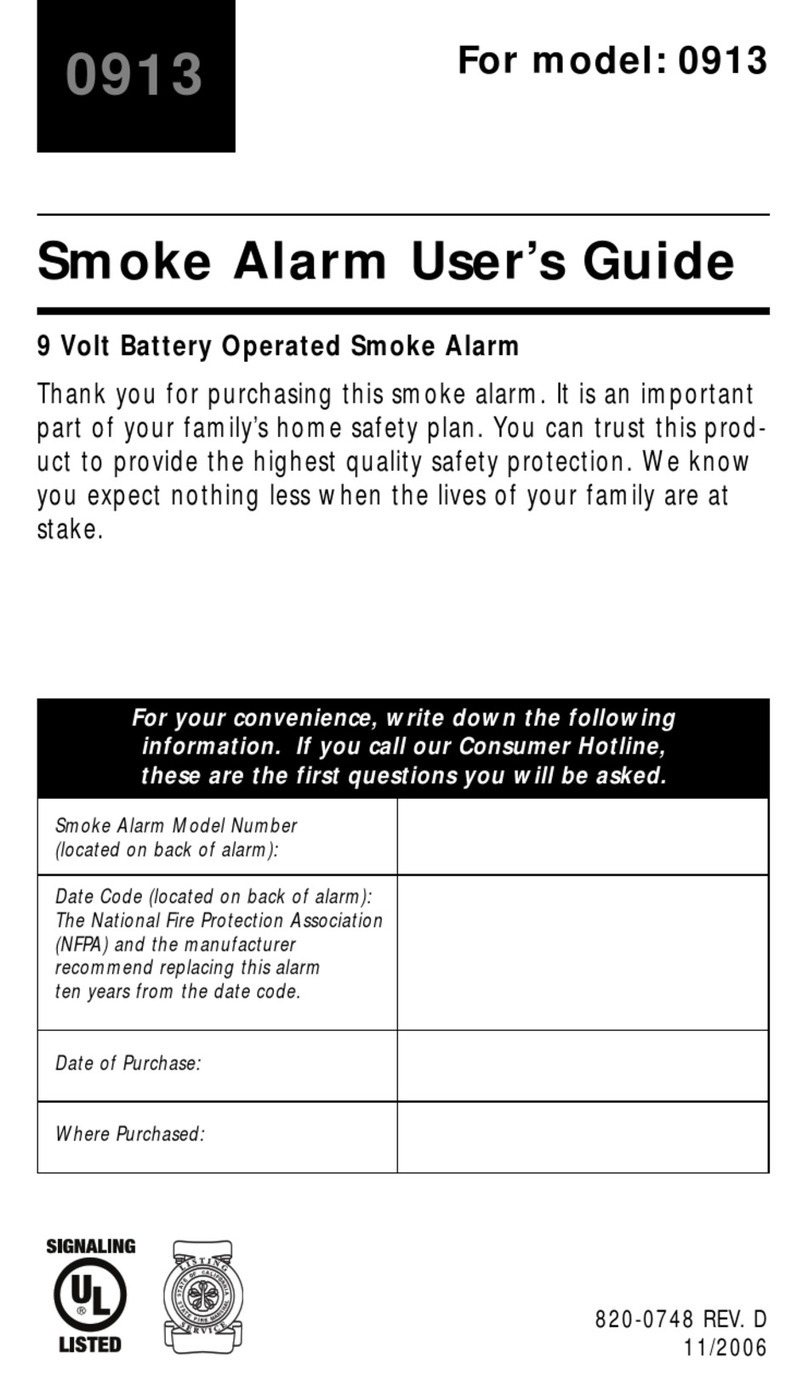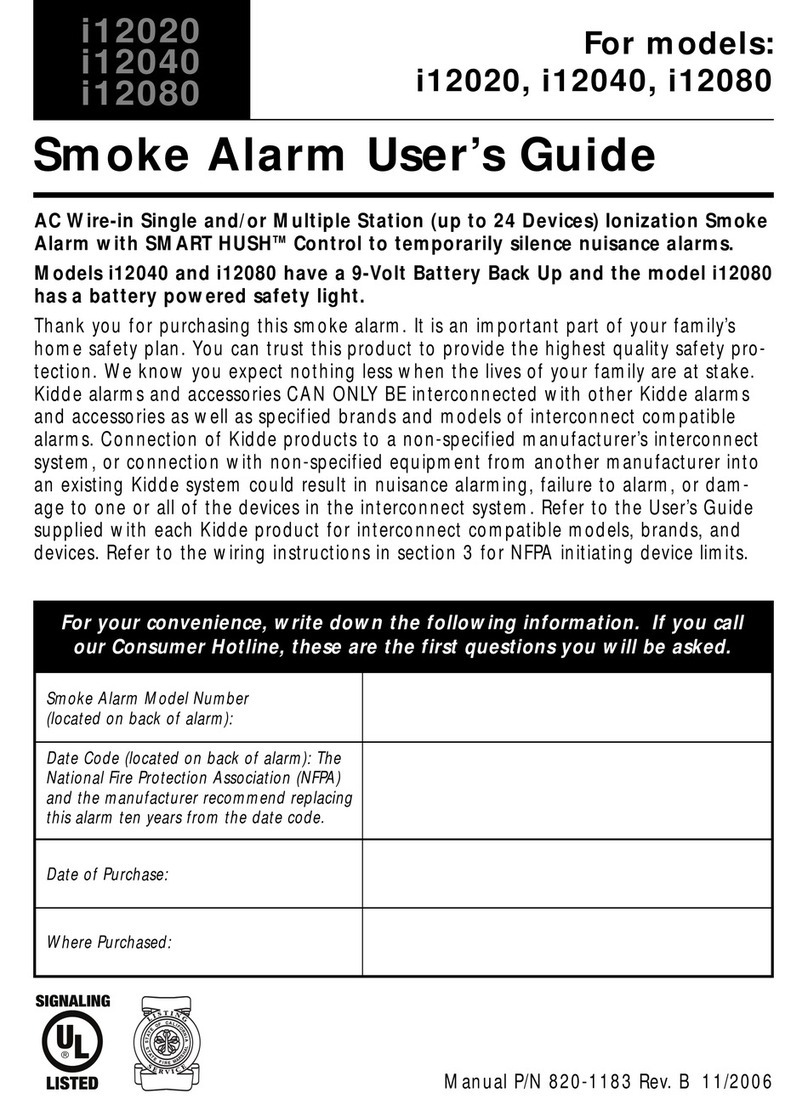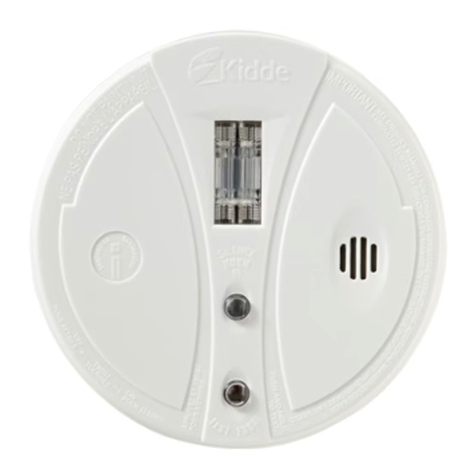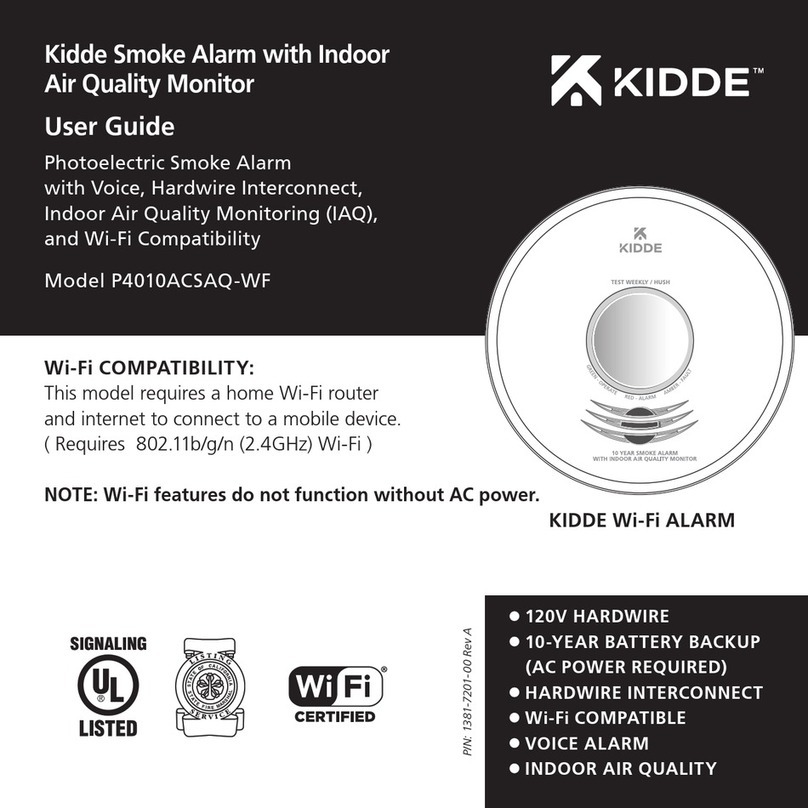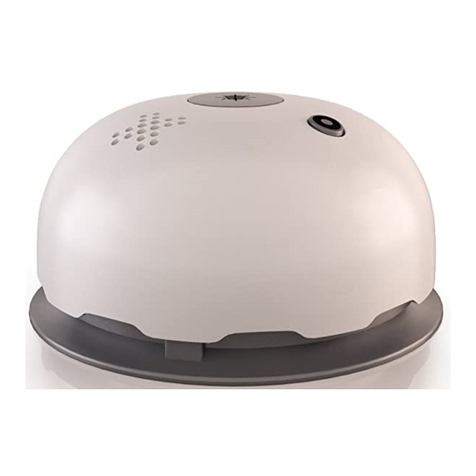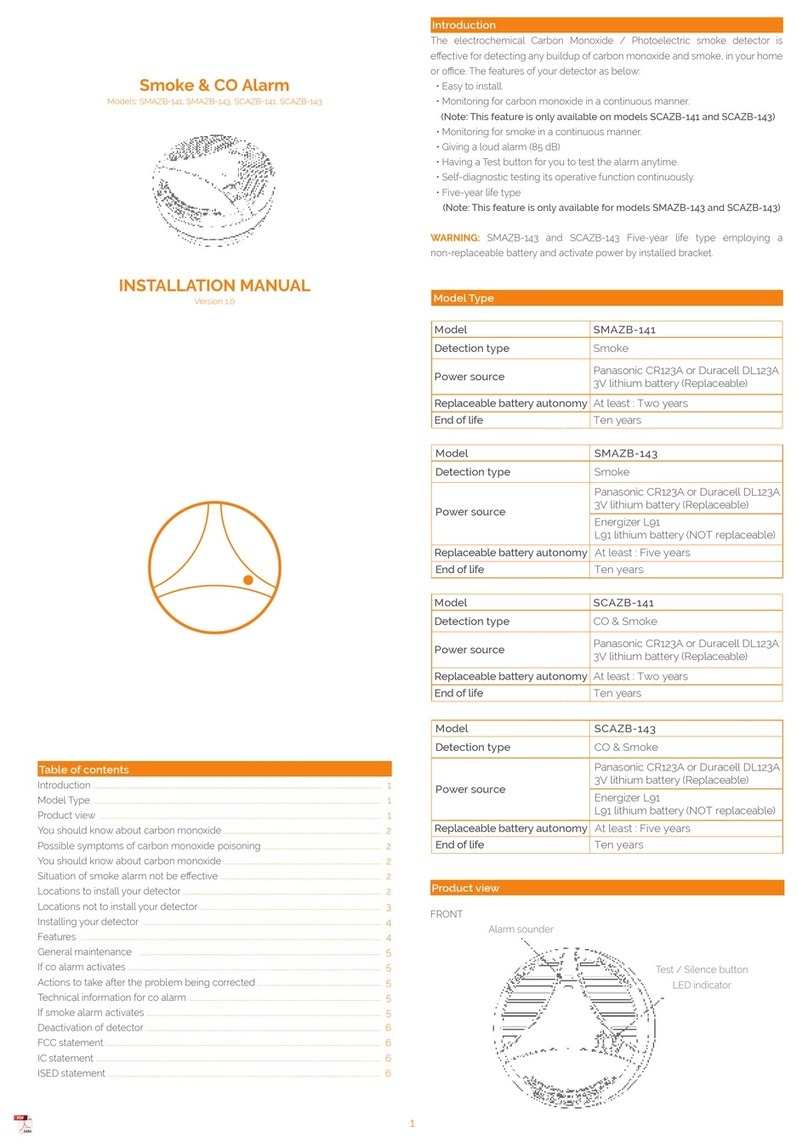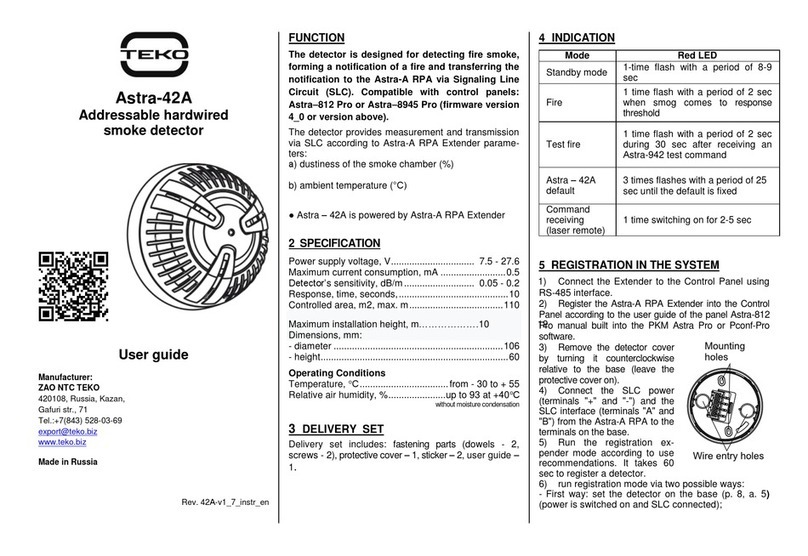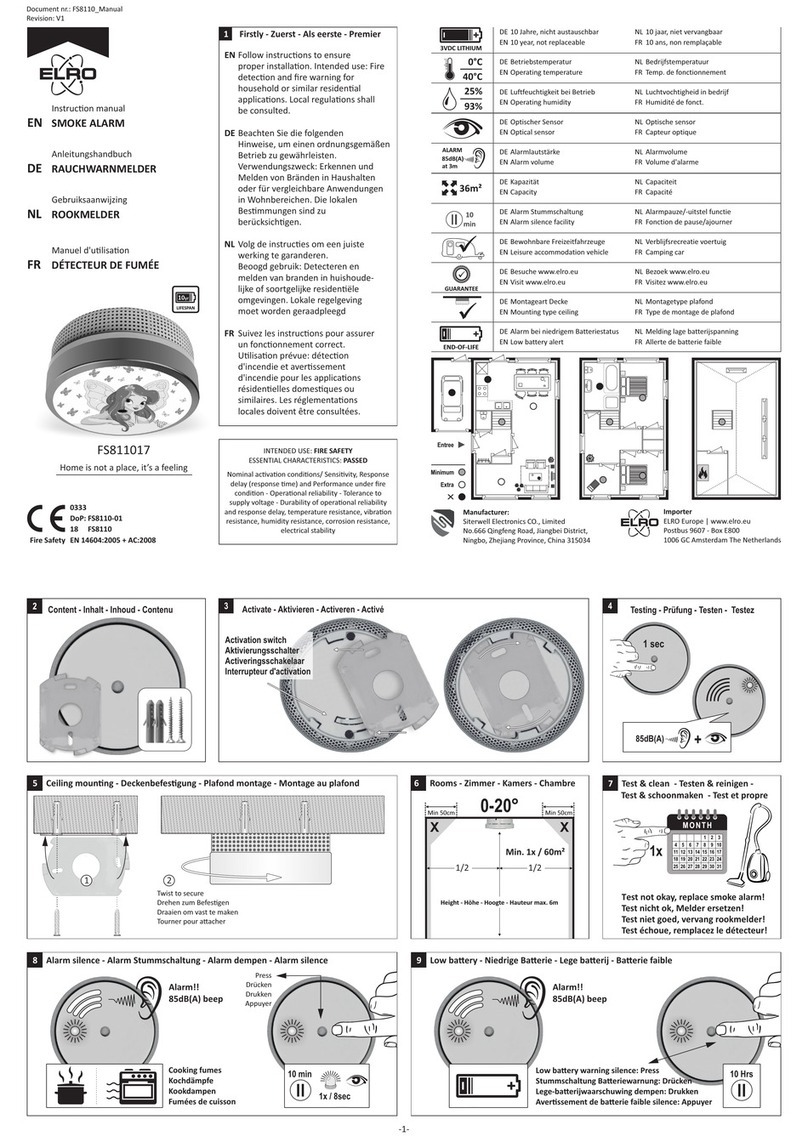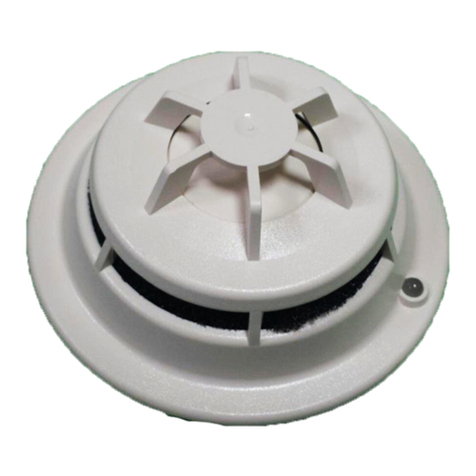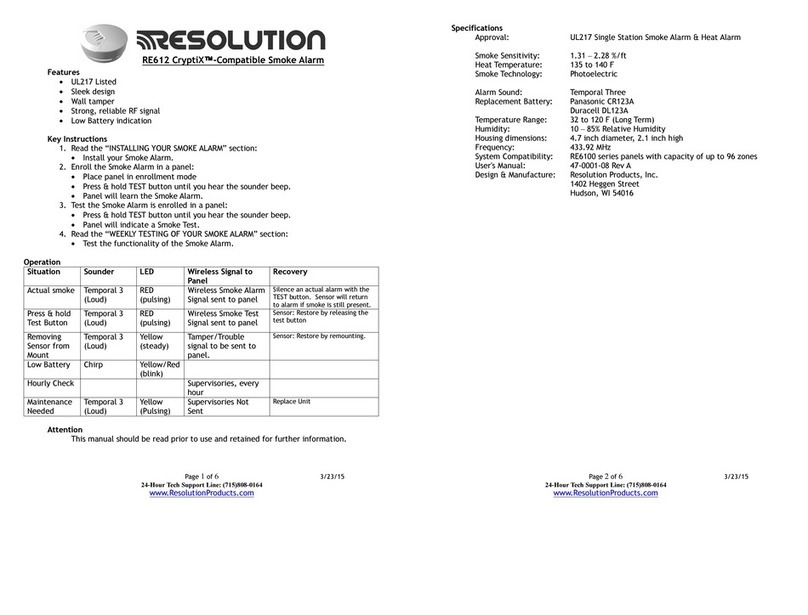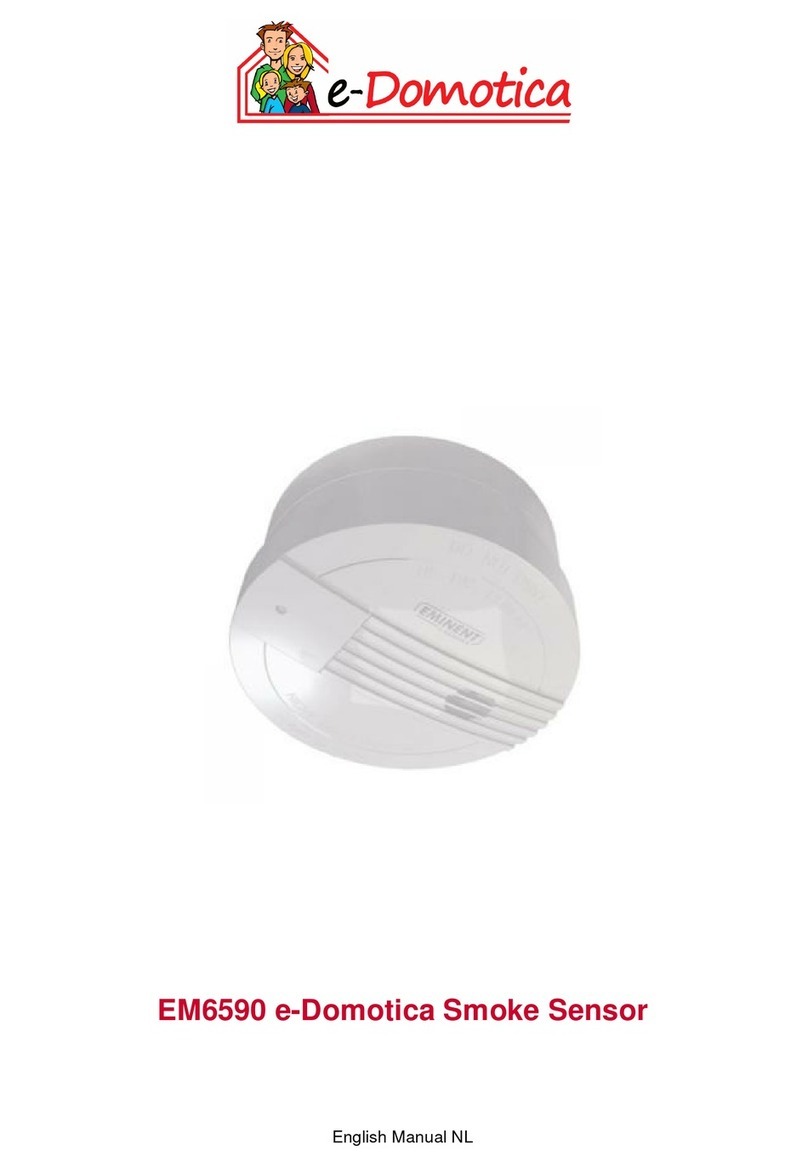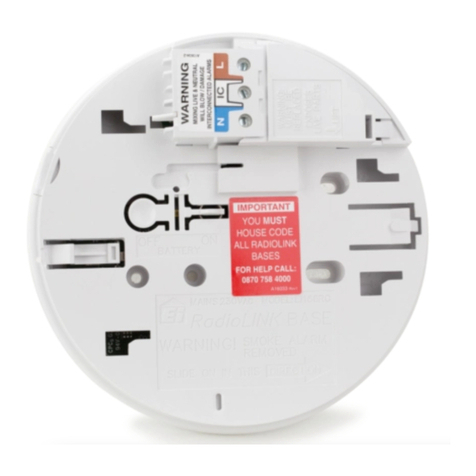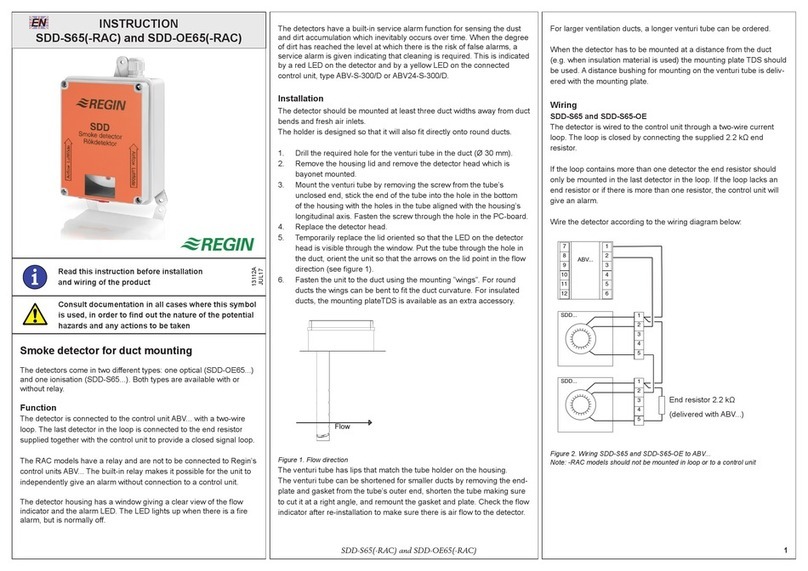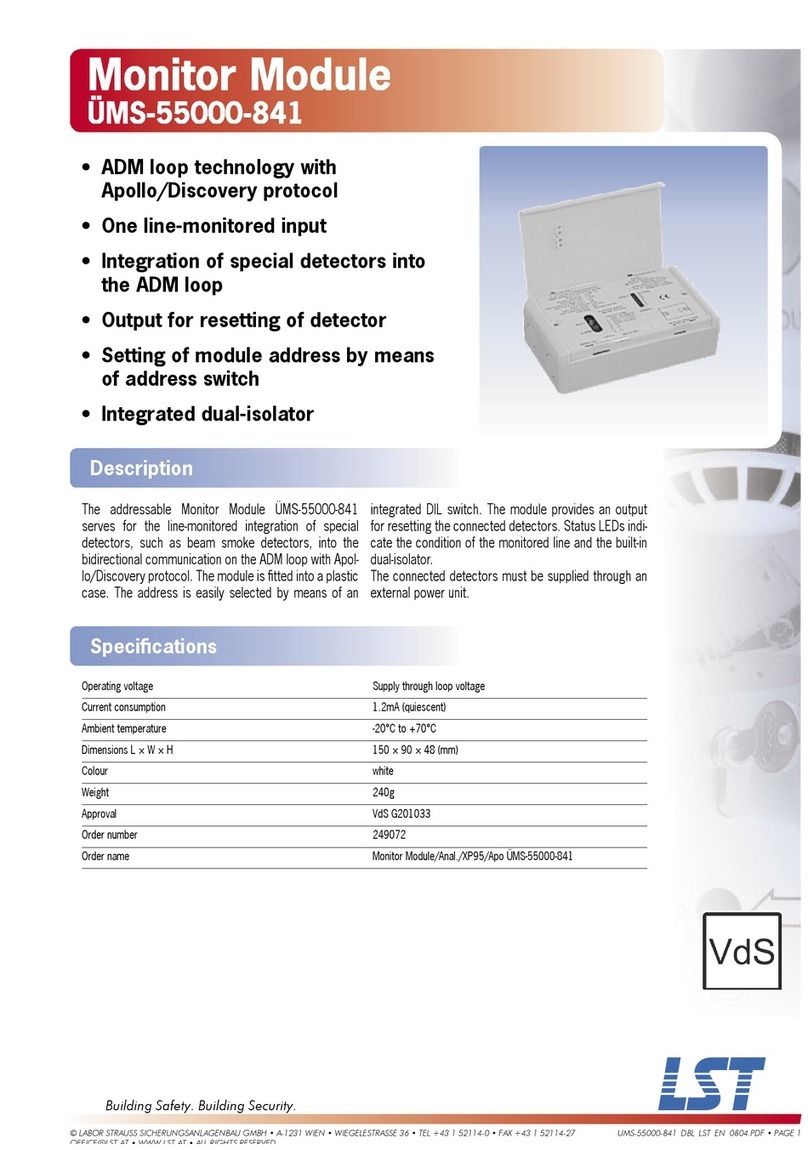9V Interconnectable Alarms For models:
19HI, 19HILL, 29I, 29ILL, 29HI, 29HILL,
1
Thank you for choosing a Kidde Fyrnetics alarm.
Please read through our guide in full. It should be retained for future reference.
Cut out page 6 and pin up near your Consumer Unit/Fuse Box.
Kidde Fyrnetics recommends for maximum protection that both ionisation and
optical (photo-electric) smoke alarms be installed. Ionisation technology is
faster at detecting fast flaming fires that give off little smoke. Optical (photo-
electric) technology is faster at responding to slow, smouldering smoky fires.
Heat alarms (hard wired only) are installed in environments where excessive
steam, dust etc. make smoke alarms impractical e.g. kitchens/boiler
rooms/lofts.
Electrical rating 9V DC,
80mA max per alarm
with 12 alarms interconnected).
Battery Smoke alarm
Owner’s Manual
SAVE THIS MANUAL FOR FUTURE REFERENCE
Kidde Safety urope, Mathisen Way, Colnbrook, SL3 0HB, UK.
www.kiddefyrnetics.co.uk
© Kidde Fyrnetics 2000
Lic No: 7861
BS 5446: Pt. 1: 1990 (19 series)
BS 5446: Pt. 1: 2000 (29 series)
Read this manual thoroughly and follow its instructions regards
regular maintenance. – it could save your life.
DCOM/100
Contents
Section 1. Alarm Range . . . . . . . . . . . . . . . . . . . . . . . . . . . . . . . . . . . . . . . . . . . .2
Section 2. Important Information . . . . . . . . . . . . . . . . . . . . . . . . . . . . . . . . . . . . .2
Section 3. Types of Alarm . . . . . . . . . . . . . . . . . . . . . . . . . . . . . . . . . . . . . . . . . . .2
Section 4. Installation Instructions . . . . . . . . . . . . . . . . . . . . . . . . . . . . . . . . . . .3
Section 5. Recommended Locations For Smoke Alarms . . . . . . . . . . . . . . . . . . . .3
Section 6. Locations to be Avoided . . . . . . . . . . . . . . . . . . . . . . . . . . . . . . . . . . . .4
Section 7. Installing Alarm . . . . . . . . . . . . . . . . . . . . . . . . . . . . . . . . . . . . . . . . . .4
Section 8. Initial Testing and Checking of Alarm . . . . . . . . . . . . . . . . . . . . . . . . .6
Section 9. Interconnecting . . . . . . . . . . . . . . . . . . . . . . . . . . . . . . . . . . . . . . . . . .6
Section 10. How to Operate/Test the Alarm . . . . . . . . . . . . . . . . . . . . . . . . . . . . . .6
Section 11. Battery Checking/Changing . . . . . . . . . . . . . . . . . . . . . . . . . . . . . . . .8
Section 12. Timing of Installing/Decorating . . . . . . . . . . . . . . . . . . . . . . . . . . . . .9
Section 13. Decorating . . . . . . . . . . . . . . . . . . . . . . . . . . . . . . . . . . . . . . . . . . . . . .9
Section 14. L. .D. Status . . . . . . . . . . . . . . . . . . . . . . . . . . . . . . . . . . . . . . . . . . .10
Section 15. Ongoing Maintenance . . . . . . . . . . . . . . . . . . . . . . . . . . . . . . . . . . . .10
Section 16. Checking Battery on Sealed in/Long Life Models . . . . . . . . . . . . . . .10
Section 17. Maintenance . . . . . . . . . . . . . . . . . . . . . . . . . . . . . . . . . . . . . . . . . . .10
Section 18. What to do in an mergency . . . . . . . . . . . . . . . . . . . . . . . . . . . . . . .11
Section 19. Troubleshooting . . . . . . . . . . . . . . . . . . . . . . . . . . . . . . . . . . . . . . . . .11
Section 20. Useful Hints . . . . . . . . . . . . . . . . . . . . . . . . . . . . . . . . . . . . . . . . . . . .11
Section 21. Good Safety Habits (Cut off Section) . . . . . . . . . . . . . . . . . . . . . . . . . .7
Section 22. What to do when the Alarm Sounds (Cut off Section) . . . . . . . . . . . . .7
Section 23. Limitations of Smoke Alarms . . . . . . . . . . . . . . . . . . . . . . . . . . . . . . .12
Section 24. Service and Guarantee . . . . . . . . . . . . . . . . . . . . . . . . . . . . . . . . . . . .12
